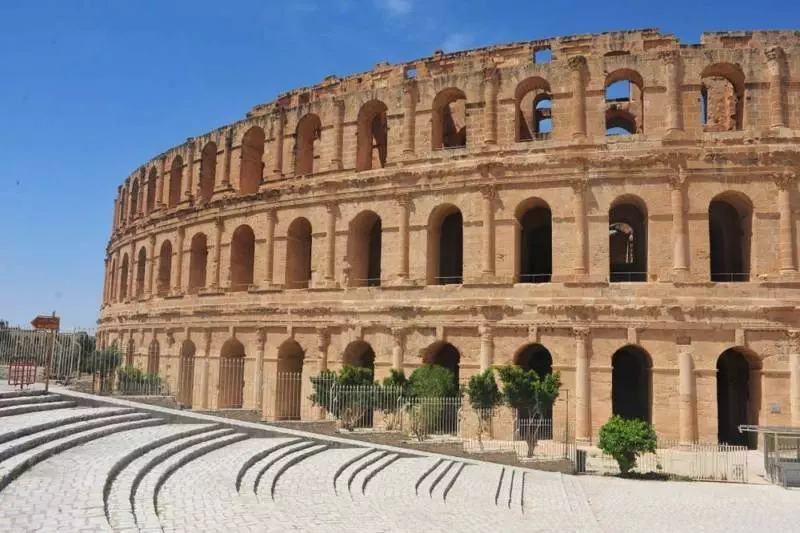
It’s not every day you have a place to yourself as a tourist.
Despite being easy to reach and a wonderful example of Roman architecture, this 3rd century UNESCO World Heritage doesn’t get nearly the sort of coverage it deserves. We saw no more than 10 tourists during our shoulder-season visit, though to be sure the future of Tunisia’s tourism is unclear after two terrorist attacks in 2015. The center of filming for both the Life of Brian and Gladiator means you might have some flashbacks as you’re meandering, and what remains has been preserved nicely.

Give it a minute and you’ll figure it out. Like a number of other destinations, the ‘photography fee’ seems a convenient excuse to nickel-and-dime, but fifty cents isn’t a huge deal in the grand scheme of things.

The country runs on Arabic and French, and English is a distant third in comparison. Being a UNESCO World Heritage Site means there’s some passable English on the signs, however.
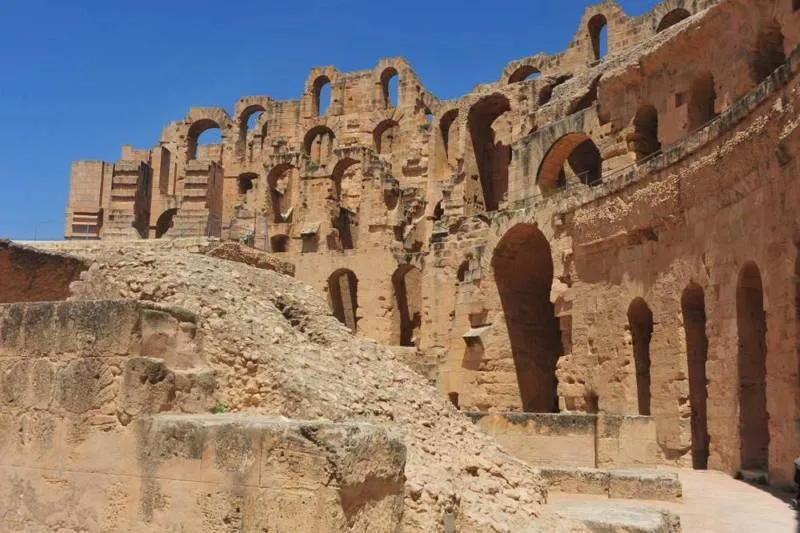
Very few barriers in place make it easy to get plenty of clean shots — no ‘tourist removing’ apps needed! This is in sharp contrast to the Roman coliseum… but we’ll save that comparison for another day.
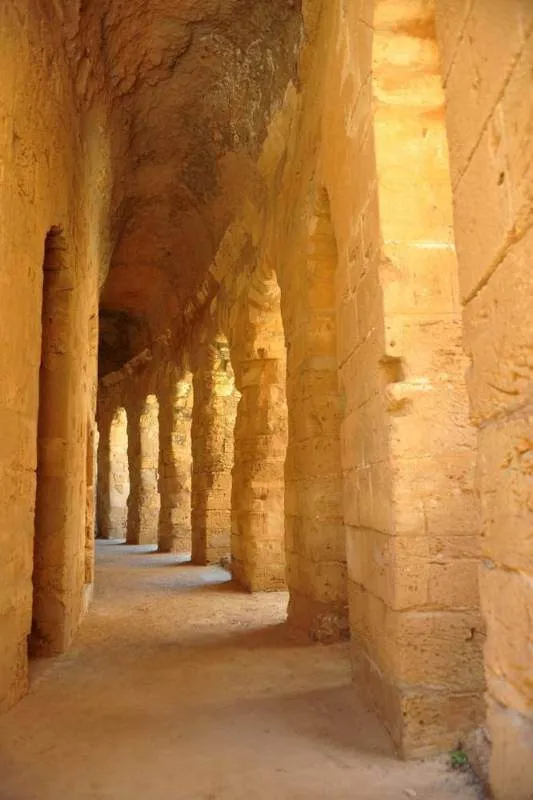
Go on, try to imagine how many thousands of Romans once watched matches here and roamed the corridors…

More than a few folks have opted to deface a world treasure… Dick move, people.
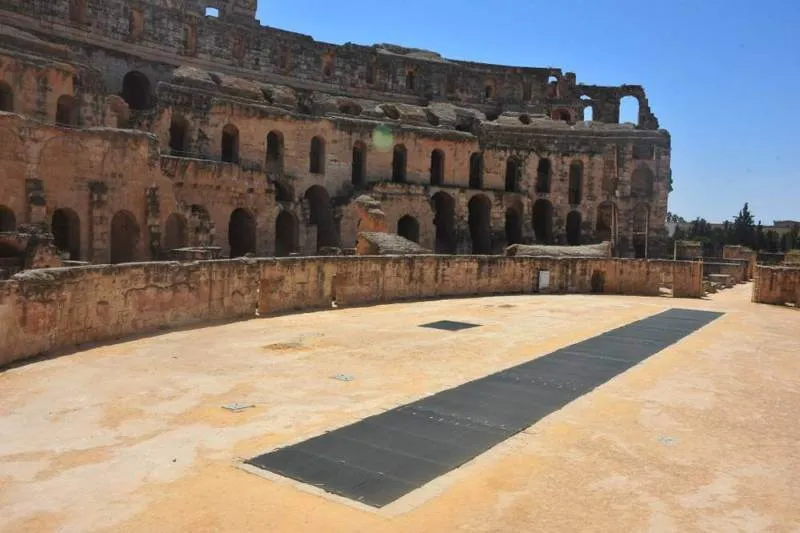
Even with virtually all access, one of the only signs of the modern reconstruction is the metal grating keeping people from falling down a level. The trench was once covered by a wooden deck, and if you look around the edge you can get the slots where the wooden beams once supported the deck.
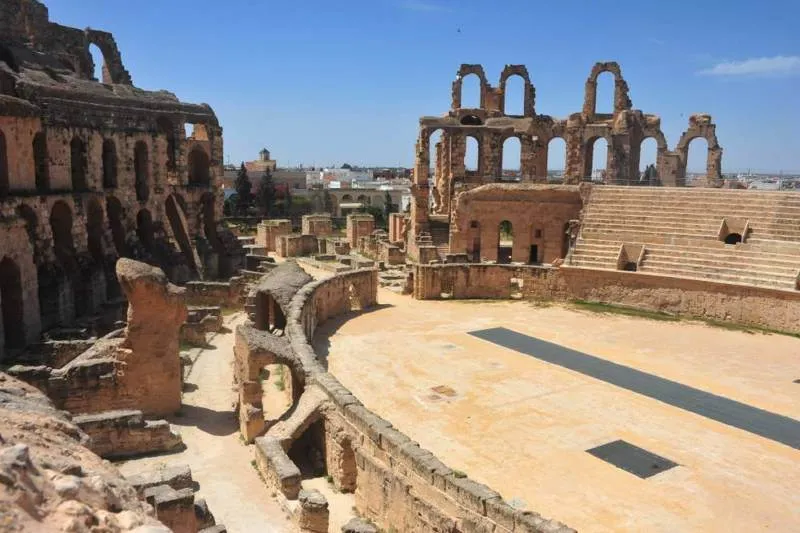
At 148 meters long and 122 meters across, the stands once held an estimated 30,000 people. Your seat was dependent on your rank in the empire, of course, so don’t think you could have just sat anywhere.
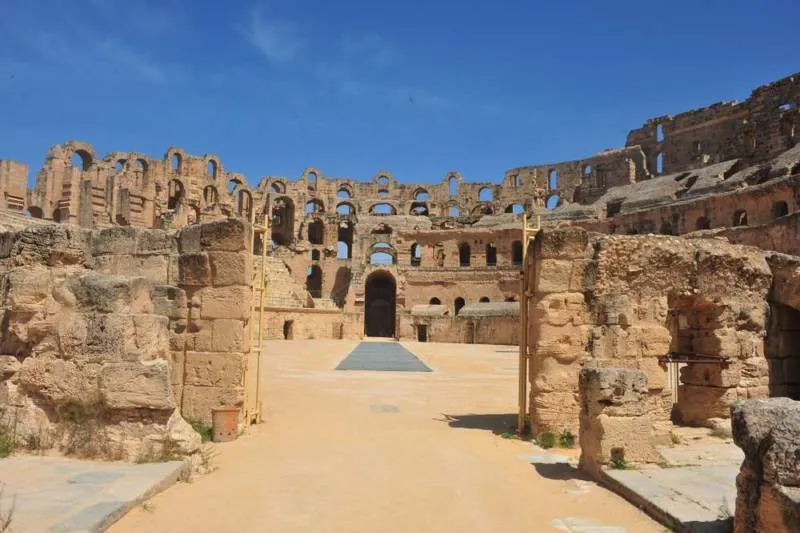
It is (and should be) amazing this was all done in the 3rd century with no foundation and was free-standing. the architects here did have the advantage of looking back at around 350 years of coliseum-making, and this was one of the last big coliseums / amphitheatres built by the empire.

Now we’re talking — this area got put in the map in the 2nd century as an exporter of olive oil. Wander around the backside to discover some olive trees.

Even with few tourists around, it just wouldn’t be a tourist destination if there wasn’t a souvenir shop. Pick up some ‘local spices’, some fired clay statues and vases, some gaudy stone bracelets, and some large hookahs that definitely won’t fit in your carry-on.

The guys selling camel rides were surprisingly low-key — one made eye contact and smiled, but made no serious attempt to sell anything. Almost like he was going through the motions…
We’re not done yet, people.
I promised you a secret treasure in the title… and here we are. As you’re getting ready to leave the amphitheatre, look for a brown sign pointing right for the musée archéologique. It’s about an 800-meter walk down a side road full of fantastic African tiles.

Established in 1970 and renovated in 2002, the El Jem Archeological Museum has been kept up better than expected for a place that’s not even on Google Maps (see the directions below for exact GPS coordinates). The same 10 dinar ticket that got you into the coliseum gets you in here, so it’s just a matter of arriving and enjoying.

Plenty of English panels and at least a little something for virtually every larger piece. This mosaic, full of triangles in a fan shape, dates back to the 3rd century A.D.

No photo trickery here, people — that’s a floor-to-ceiling mosaic right there.
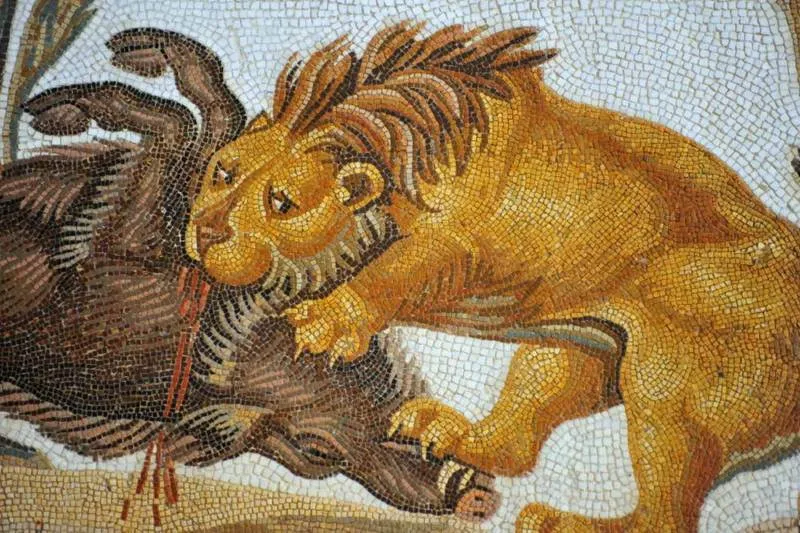
Love the detail here — lions devouring a boar, from the middle of the 2nd century AD.
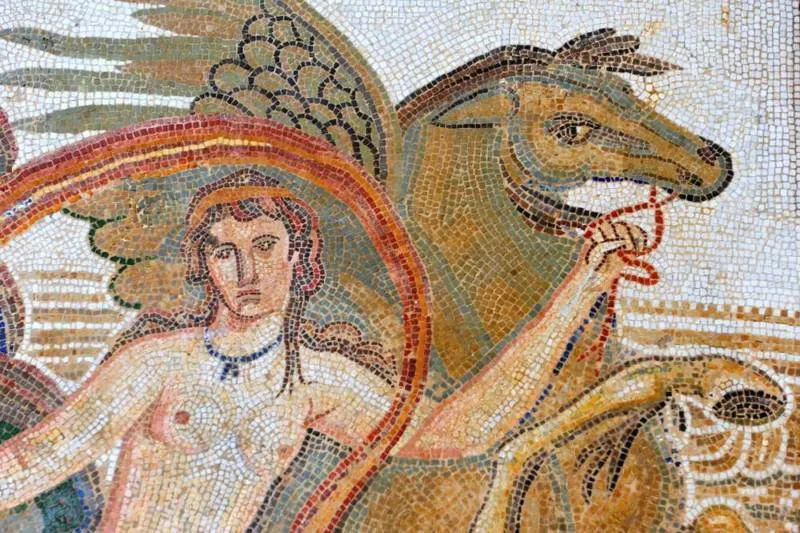
Who doesn’t like a nymph laying down with her seahorse?
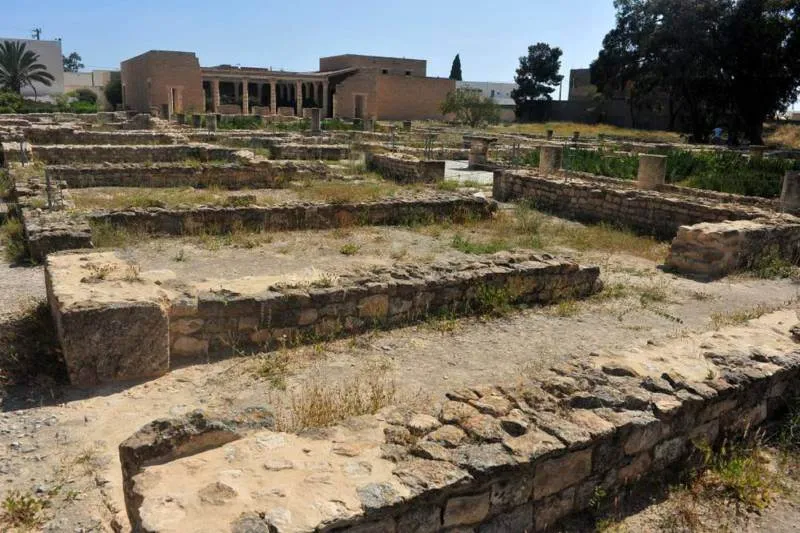
Step outside for the other side of the story — part of the old neighborhood can be walked through.
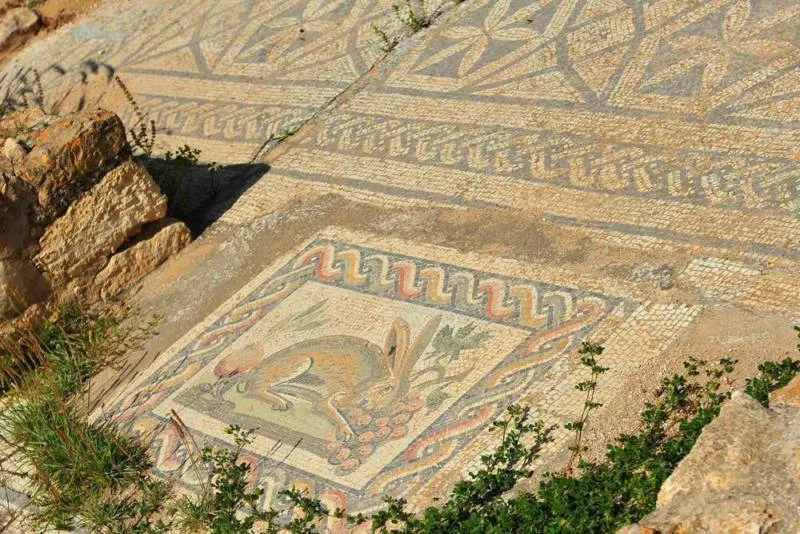
The tiled entryway indicated what was sold, purchased, or dealt with there — a little more difficult to pick up your business and move to a better location, but them’s the breaks.
As a daytrip excursion from Tunis, it’s about as good as it gets. Whether you’re looking to get back to Tunis or head elsewhere in Tunisia, it’s a solid waypoint whichever way you opt to go.
Name: El Jem Coliseum and Archeological Museum
Address: along Rue De La Libye, El Jem, Tunisia (GPS: 35.296431, 10.706908). The museum is along Route de Sfax, El-Jem 345 (GPS: 35.288948, 10.705685)
Directions: from Tunis or elsewhere in the country, take a train to El Jem. With the El Jem train station at your back, walk straight along Rue De La Libye (C93) for about 350 meters. You’ll spot the Coliseum easily enough. For the archeological museum, look for the signs pointing you down a side road. Stay straight on it for about 800 meters heading south-south-west — it’s near the post office.
Hours: 8am-5:30pm from mid-September to the end of March (‘winter’) and 7:30am-6:30pm from April to mid-September (‘summer’). The musée is open 8am-5:30pm year-round.
Admission: 10 DT + 1 DT camera fee (same ticket as museum)
Phone: none
Website: http://www.inp.rnrt.tn/index.php?option=com_content&view=article&id=49&Itemid=39&lang=en (for the museum)


